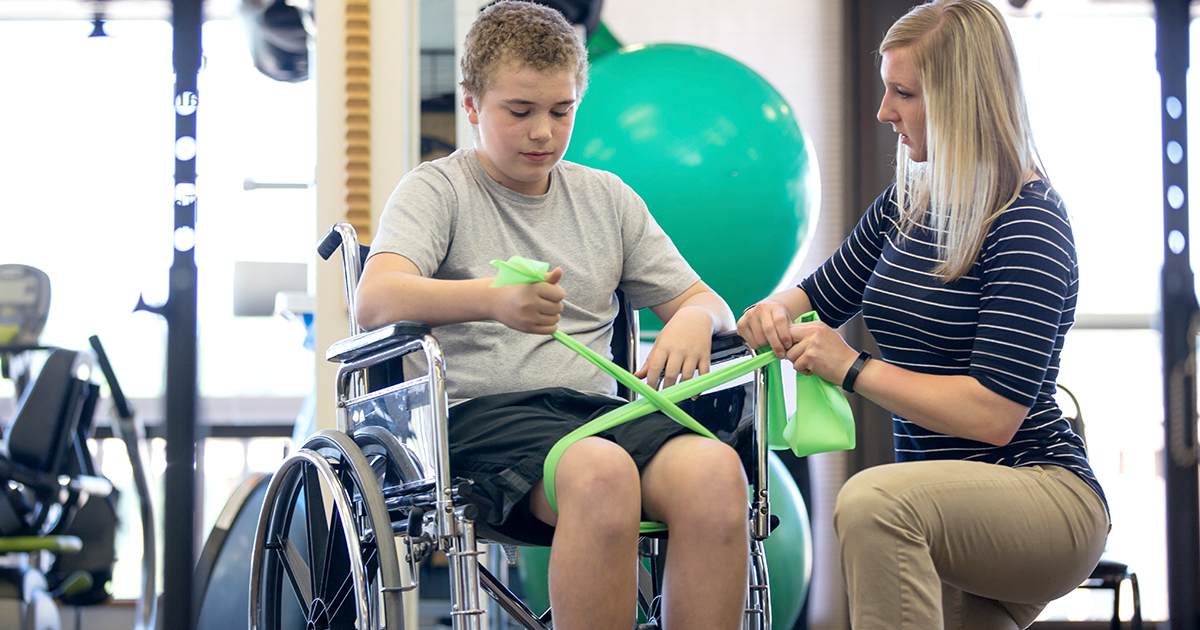Key Signs Of Duchenne Muscular Dystrophy
Duchenne muscular dystrophy (DMD) is a hereditary disorder that involves progressive muscle weakness and degeneration. There are nine overarching types of muscular dystrophy. In the case of Duchenne muscular dystrophy, a patient doesn't create dystrophin, which is one of the proteins responsible for keeping the muscle cells intact. The symptoms usually start between the ages of three and five. Though the disease usually affects boys, there have been rare cases where girls develop some symptoms.
It should be noted the mother is the one who passes on the gene for Duchenne muscular dystrophy. A milder disease, Becker muscular dystrophy, has the same symptoms but typically presents in adolescence or early adulthood. It also progresses more slowly and less predictably than Duchenne muscular dystrophy, as well as primarily affecting girls.
Muscle Weakness

The most characteristic symptom of Duchenne muscular dystrophy is muscle weakness, which can begin around age three or four. The first muscles affected are typically the thighs, shoulders, hips, and pelvic region. As the disease progresses, there will be weakness in the voluntary muscles found in the legs, trunk, and arms. In many cases, the calves become enlarged. The skeletal muscles throughout the body are affected. By adolescence, the majority of Duchenne muscular dystrophy patients must use a wheelchair because of the weakness in their skeletal muscles. The condition doesn't have any known cure, but certain treatments can help manage symptoms.
Delay in Walking

A child's first steps are an important milestone. In most cases, slightly delayed walking isn't a reason to worry. However, studies have indicated when delayed walking is paired with cognitive delays, these may be the earliest signals of medical conditions, including Duchenne muscular dystrophy. One study, conducted by a pediatric neurologist and medical student, showed it's common for boys with Duchenne muscular dystrophy to have delays in walking.
These delays often occur alongside cognitive developmental delays. Ordinarily, toddlers take their first steps between nine and sixteen months old. The researchers believe these combined developmental delays should be a signal further testing is necessary. If Duchenne muscular dystrophy is diagnosed before symptoms of muscle weakness begin, the treatment options could theoretically be more effective.
Frequent Falls And Waddling Gait

Frequent falls and a waddling gait are common symptoms of Duchenne muscular dystrophy. Preschoolers with this condition may seem unusually clumsy and fall often. Parents sometimes note their children with Duchenne muscular dystrophy have problems with climbing the stairs, running, or getting up after they fall. By the time they reach school age, many children walk on the balls of their feet or their toes. Their gait may waddle slightly, and some children pull back their shoulders and push their bellies out to try to maintain their balance.
They might have trouble raising their arms as well. Children with Duchenne muscular dystrophy usually start to use a wheelchair between seven and twelve years old, transitioning to full-time wheelchair use by adolescence. By the teen years, patients may need mechanical support or assistance to use their trunk, legs, or arms.
Issues With The Heart

Issues with the heart are a key part of Duchenne muscular dystrophy. As mentioned, in patients with this condition, the body doesn't create the protein dystrophin, an essential part of the heart and skeletal muscles. Patients with dystrophin-based diseases often develop dilated cardiomyopathy, which leads to heart failure. Dilated cardiomyopathy occurs when the heart loses the ability to pump blood. The main pumping chamber in the heart, the left ventricle, becomes weakened and enlarged. In certain cases, this keeps the heart from filling with blood and relaxing properly. As time goes by, the condition can also affect the other chambers of the heart.
Weakened Respiratory Muscles

Duchenne muscular dystrophy patients may have weakened respiratory muscles. Usually, these symptoms become noticeable around the time the patient is ten years old. The lungs are operated by multiple muscles including the diaphragm. These muscles, along with the diaphragm, become weaker as the disease progresses, making the lungs ineffective at moving the air. Some children might complain their breathing is impaired.
However, children may not notice shortness of breath since the lungs themselves aren't affected. Children with weakened respiratory muscles may also have nightmares, difficulty focusing, trouble staying awake, mental dullness, and headaches. Weakened muscles also make coughing difficult, which makes the risk of respiratory infection higher. Common colds can quickly turn into pneumonia.
